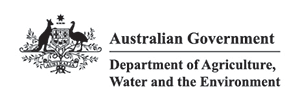Drones offer the chance of real-time micro-climate information

This project is supported by funding from the Australian Government Department of Agriculture, Water and the Environment as part of its Rural R&D for Profit programme.
Drones may soon have more value in the wine sector than simply filming sweeping panoramic vistas for videos and online marketing materials.
Research at the University of South Australia is exploring whether unmanned air vehicles (UAVs) could be used to provide accurate, immediate and cost-effective snapshots of the micro-climate anywhere in or above vineyards.

Professor Anthony Finn, the Research Professor of Autonomous Systems at UniSA’s Defence and Systems Institute, is certainly excited by its potential. While his three-year project – funded by the Australian Government Department of Agriculture as part of its Rural R&D for Profit programme and Wine Australia – is just beginning, there’s been some serious science and high-level collaboration to get to this stage.
Since Professor Finn had a ‘mini-Eureka moment’ in front of the whiteboard, he’s been talking or working with the Australian Research Council, the Sir Ross and Sir Keith Smith Fund, the South Australian Research and Development Institute (SARDI), Aerosonde, private consultants, leading wine companies, the Bureau of Meteorology and the US National Center for Atmospheric Research (NCAR) in Colorado. The latter provided detailed atmospheric data (the kind you need a super computer to generate) to prove that the idea would work in theory and inspired the new project.
The theory, in simple terms, is that if you equip a UAV with a normal camera and a long-range infra-red camera set up to work as a temperature sensor you can measure the temperature of vines, grapes, buds and the ground itself.
Crucially, however, as drones make a very distinctive noise, by measuring this and converting it to sound speed between the ground sensors and the UAV you can create 3D snapshots of temperature and wind velocity up to a height of 500 metres. ‘It’s very much like taking an MRI of the sky’, Professor Finn said. ‘Just like the scans a doctor would order if you went to hospital.’
There is a lot of signal processing involved, but when you put all the bits together it allows you to monitor and assess temperature and wind conditions at the meso and micro scale without needing masses of very expensive equipment.
‘The vision is that vignerons would have a bunch of microphones in their vineyard, solar or battery powered, and weather protected. They’d have a drone, and when it’s needed it would fly around, make its natural noise, take pictures and land,’
